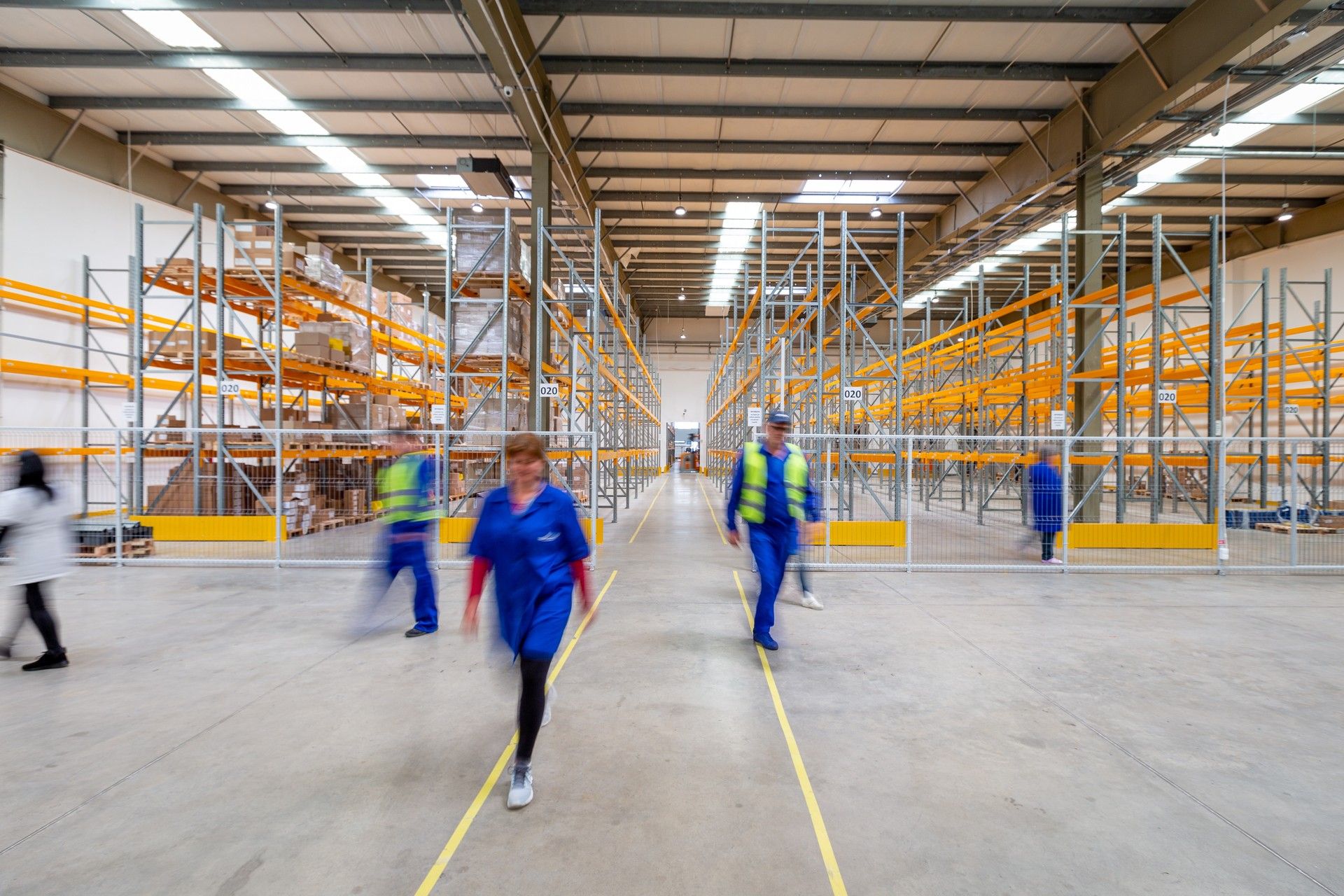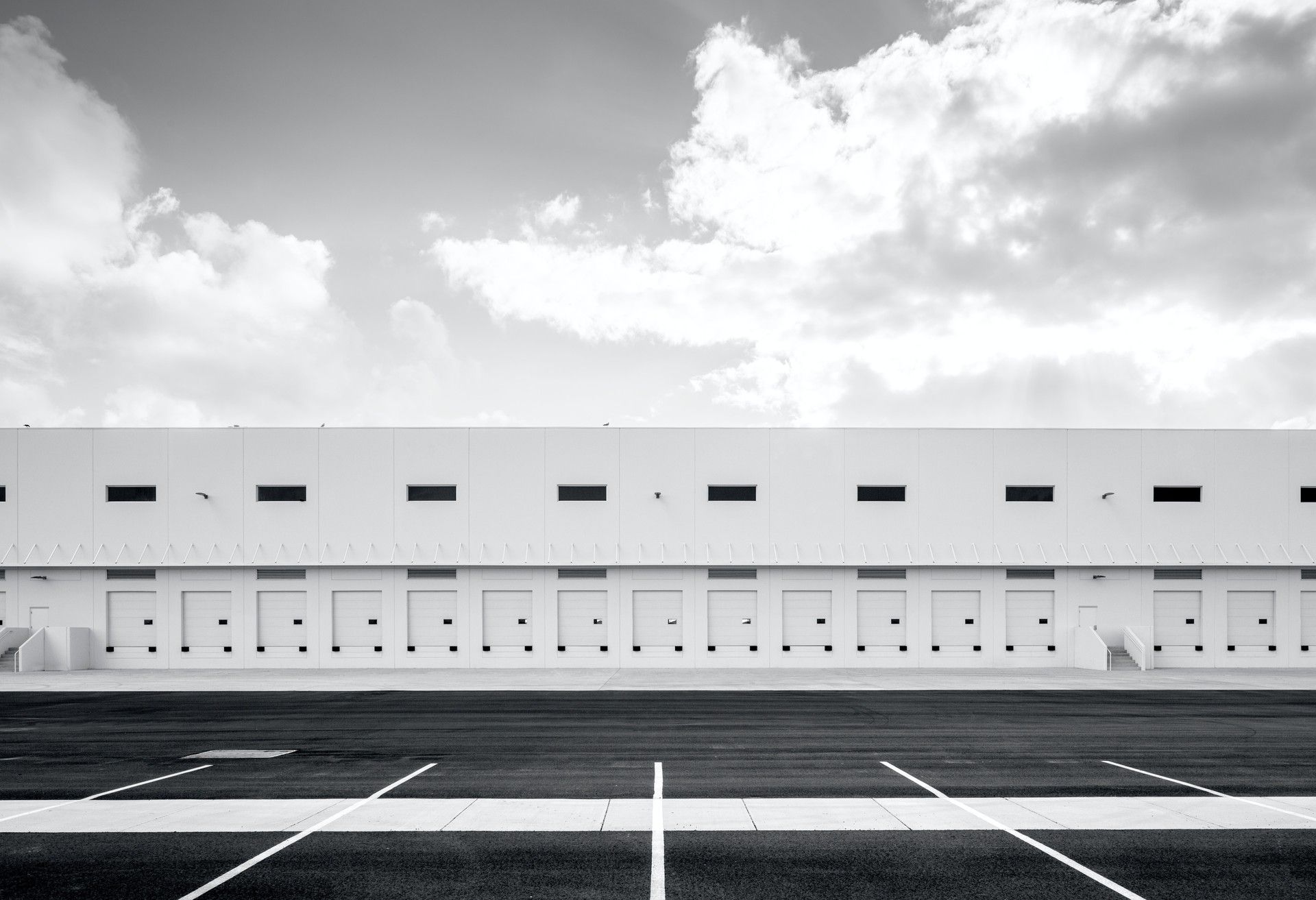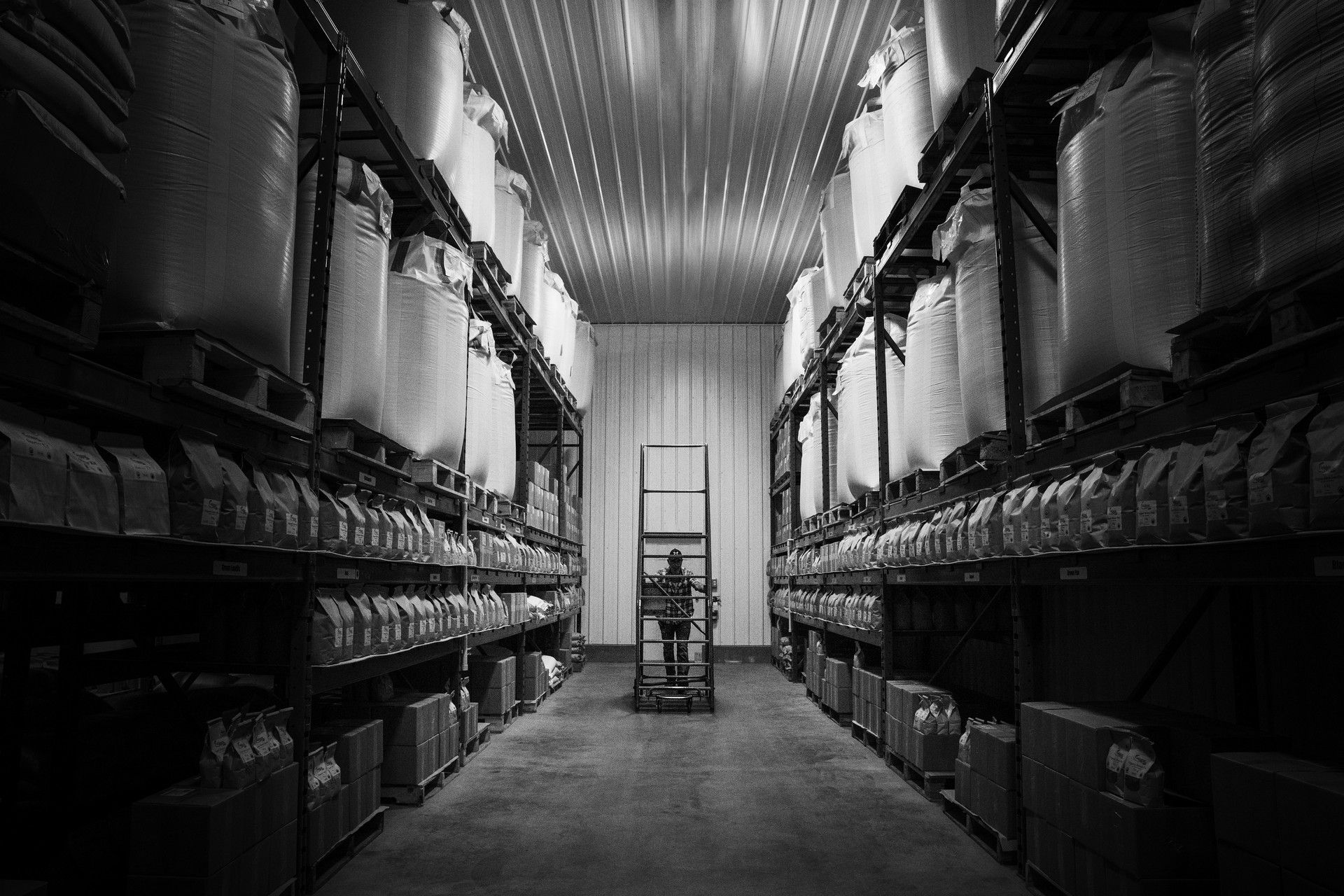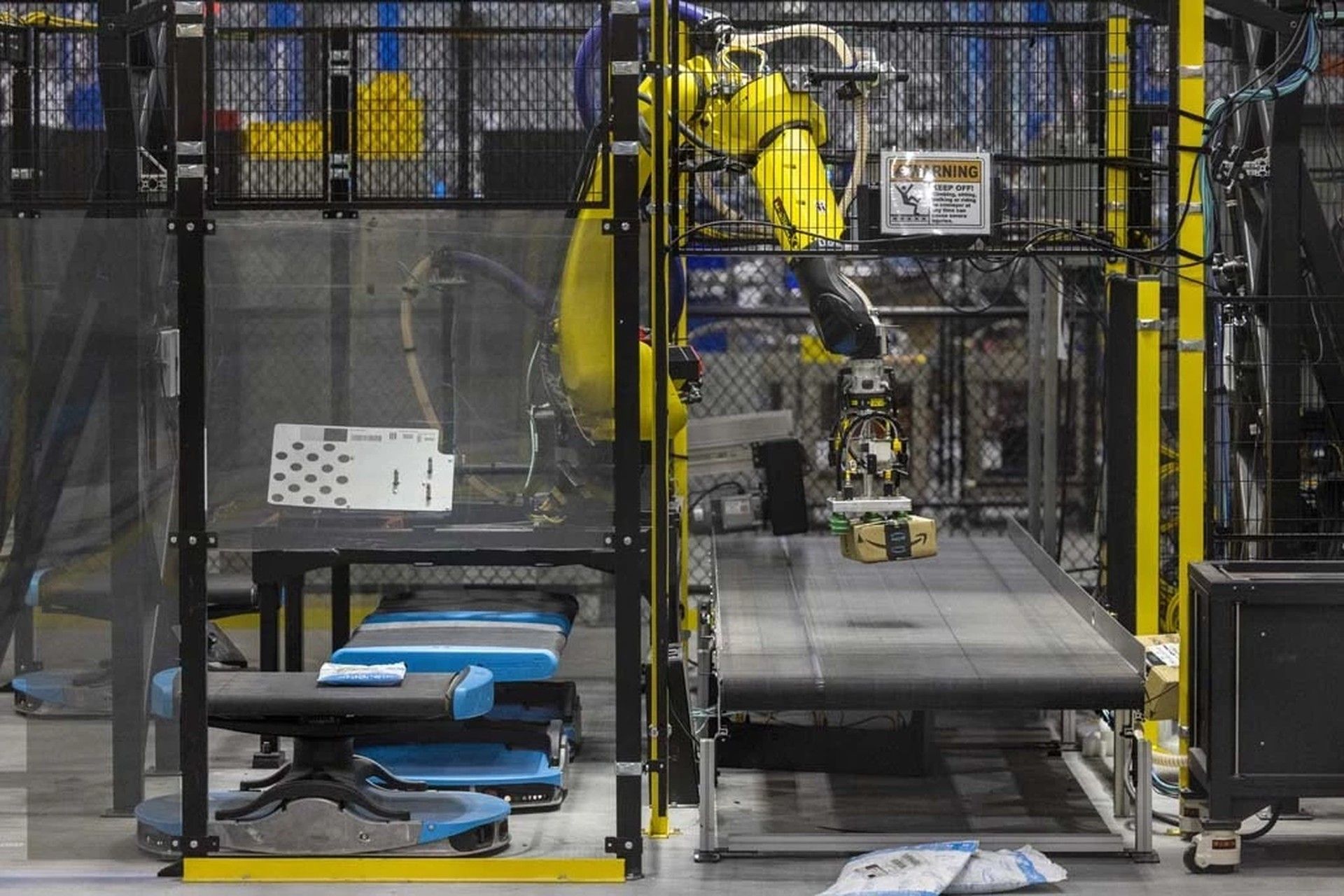The layout of a warehouse is one of the most important factors affecting its efficiency, productivity, and safety. A well-designed warehouse layout can help to optimize space usage, improve inventory management, enhance picking and packing efficiency, reduce labor costs, improve safety, increase capacity, support omnichannel fulfillment, accommodate seasonal fluctuations, minimize equipment damage, and support sustainability.
We are now very close to the times we always talk about as the future and we see concepts such as machine learning, IoT, and artificial intelligence in many of the tools we use in our daily lives. Day by day, humanity accepts technology, puts it at the center of its life, and benefits from it.
So how does the industry get its share in this automated life? Thanks to industrial IoT, gone are the days of highly complicated problems that used to require experts to spend hours or even days solving specific problems. Now our work sites have become much safer, more profitable, and enjoyable.
One area we need to think about is warehouses. Especially, the design of these warehouses affects the effectiveness of almost every company doing their business online in the global market. Would you believe us if we told you that artificial intelligence can help you with that too?

Why does warehouse layout matter?
Warehouse layout plays a crucial role in the success of any warehouse operation. A well-designed layout can significantly impact the efficiency, productivity, and safety of warehouse operations, making it an essential aspect of supply chain management.
Here are ten reasons why warehouse layout matters:
Optimizes space usage
A good warehouse layout makes the most of the available space, allowing for easy navigation and storage of inventory. It helps to utilize every square foot of the warehouse, reducing wasted space and ensuring that products are stored in an organized manner
Improves inventory management
An effective warehouse layout helps ensure that inventory is stored in an organized and accessible manner, making it easier to track and manage inventory levels. This reduces the risk of stockouts or overstocking, which can lead to lost sales or unnecessary holding costs.
Enhances picking and packing efficiency
A well-designed warehouse layout can reduce travel time and distance for pickers and packers, allowing them to fulfill orders more quickly and accurately. This improves customer satisfaction and reduces labor costs associated with order fulfillment.
Reduces labor costs
By minimizing travel time and distance, a good layout can help reduce labor costs associated with order fulfillment. This can be achieved by locating frequently picked items in easily accessible locations, reducing the need for repetitive walking or driving.
Improves safety
A safe and efficient warehouse layout can help prevent accidents and injuries by reducing congestion, improving lighting, and providing clear paths for pedestrians and vehicles. This not only benefits employees but also helps to protect expensive equipment from damage.
Increases capacity
A well-designed warehouse layout can handle increased volumes of inventory and orders, allowing the warehouse to operate at peak efficiency. This supports business growth and helps to meet customer demand during busy periods.

Supports omnichannel fulfillment
A flexible warehouse layout can accommodate multiple fulfillment channels, such as e-commerce, retail, and wholesale, ensuring that orders are processed efficiently and accurately. This allows warehouses to adapt to changing market conditions and customer preferences.
Accommodates seasonal fluctuations
A good warehouse layout can help manage seasonal fluctuations in demand by providing flexibility to adjust storage and workflows as needed. This enables warehouses to scale operations up or down according to demand, minimizing waste and maximizing efficiency.
Minimizes equipment damage
A well-planned warehouse layout can help protect expensive equipment from damage, reducing maintenance costs and downtime. This helps to ensure that equipment operates at optimal levels, supporting efficient warehouse operations.
Supports sustainability
An environmentally friendly warehouse layout can help reduce energy consumption, waste, and emissions, contributing to a more sustainable supply chain. This supports corporate social responsibility goals and helps to minimize environmental impact.
What are the 4 types of warehouse layout?
There are several common types of warehouse layouts, but one of the most common is the rectangular layout. This layout features rows of shelving or racking that run parallel to each other, with aisles running perpendicular to these rows. This layout is often used in large warehouses and distribution centers because it allows for efficient storage and retrieval of products.
Another common layout is the square layout, which divides the warehouse into square sections. Each section contains rows of shelving or racking arranged at right angles to each other. This layout is often used in smaller warehouses or those with limited space, as it maximizes storage capacity while minimizing wasted space.

The U-shaped layout is another popular option, featuring a central aisle with two rows of shelving or racking on either side. This design is useful for warehouses that receive and ship products through a single loading dock, as it allows for efficient traffic flow and reduces the need for forklift maneuvering.
Finally, there is the free form layout, which doesn’t follow a specific pattern and instead uses irregularly shaped areas to create a customized storage solution. This layout is often used in warehouses with unique storage needs, such as those storing heavy or bulky items, or those with limited floor space.
How to use artificial intelligence to create the best warehouse layout design
rewrite in paragprahs: Using artificial intelligence (AI) to create the best warehouse layout design can be a powerful tool to optimize your warehouse operations. Here are some steps to consider when using AI for warehouse layout design:
- Collect and analyze data: Start by collecting data on your warehouse operations, including information on inventory, order fulfillment, storage space, and traffic flow. Analyze this data to identify patterns and areas for improvement.
- Define your objectives: Determine what you want to achieve with your warehouse layout design. This could include increasing efficiency, reducing costs, improving safety, or increasing capacity.
- Develop an AI model: Use machine learning algorithms to develop a model that can generate optimal warehouse layout designs based on your data and objectives. You can train the model using historical data and real-world examples of successful warehouse layouts.
- Test and refine the model: Once you have developed the AI model, test it using simulated scenarios to see how well it performs. Refine the model as needed to improve its accuracy and effectiveness.
- Generate layout options: Use the trained AI model to generate multiple warehouse layout options that meet your objectives. Consider factors such as storage capacity, picking and packing efficiency, and transportation routes.
- Evaluate and compare layout options: Use a combination of analytics and human judgment to evaluate and compare the different layout options generated by the AI model. Consider factors such as cost, feasibility, and potential impact on operations.
- Select and implement the best layout: Choose the layout that best meets your objectives and is most feasible to implement. Work with stakeholders to ensure a smooth implementation process and make any necessary adjustments.
- Monitor and optimize: Continuously monitor the performance of your warehouse layout and use data and analytics to identify areas for improvement. Use the AI model to generate new layout options and iterate on the design to optimize performance over time.
By following these steps, you can utilize the power of AI to create a warehouse layout design that is optimized for efficiency, productivity, and safety.

There are commercial tools too
Creating an artificial intelligence tool from scratch can be quite challenging if you are a beginner. Luckily, there are many artificial intelligence (AI) tools available to help you create the best warehouse layout design. One such tool is Industrial Artificial Intelligence Inc‘s ”Warehouse Design Automation”.
Industrial Artificial Intelligence Inc. specializes in digital transformation through AI, Machine Learning, Deep Learning, and Data-Driven Technology, primarily in the warehouse and logistics industry, with expansion to other domains. Their elite consultants work closely with customers to customize sustainable and scalable solutions.
They introduce two products: “Warehouse Design Automation” and “Warehouse Resource Planning”.
Warehouse Design Automation (WDA) is an AI-oriented cloud-based design application that uses CAD with Machine Learning to create designs for warehouse structures, including various types of storage such as APR, Double Deep, Stacking, Shelving, Longspan Shelving, and Mezzanine.
Connecting devices for optimal industrial processes
Warehouse Resource Planning is vital but often neglected due to complexity. Industrial Artificial Intelligence Inc. has developed a unique remedy to generate productivity in each activity in different warehouse operations, setting them apart from competitors. They factor in warehouse operation costs, especially MHE costs.
The Warehouse Planning Toolkit IAIC offers optimizes productivity and improves process efficiency inside a warehouse using AI techniques and data-driven technology. It creates opportunities for trends to mature from traditional execution (automation only) to integrate predictive operating models that provide insights into decision-making across warehouse planning and optimization. The toolkit comprises Requirement Analytics, WDA, Resource Planning, Diagnosis and Evaluation System, and Warehouse Simulation.
Get your inspiration from the giants of the sector
Artificial Intelligence (AI) has become a game-changer for warehouse management, presenting a compelling case for its adoption in addressing various logistical challenges. By examining a series of noteworthy case studies, we can gain valuable insights into how AI-driven solutions are reshaping warehouse layouts and operations, making a strong case for considering AI for your own warehousing needs.
Amazon Robotics Fulfillment Center serves as an exemplary case, demonstrating the impact of AI-powered robots on warehouse efficiency. Amazon has harnessed these robots, equipped with machine learning algorithms, to navigate their fulfillment centers and efficiently retrieve items from shelves. This innovation significantly reduces travel time within the warehouse and subsequently boosts overall productivity, offering a compelling illustration of AI’s potential in optimizing warehouse layouts and workflows.
In a similar vein, Walmart’s Intelligent Warehouses have leveraged AI-powered warehouse management systems to tackle inventory challenges. Through the application of machine learning algorithms, Walmart predicts demand and dynamically adjusts inventory levels. This not only minimizes waste but also enhances operational efficiency, making a strong argument for the adoption of AI-driven solutions in inventory management.

DHL’s Smart Warehouse is another noteworthy example, showcasing how AI can optimize storage, automate order picking, and improve delivery times. The integration of data analytics to predict customer behavior and adjust inventory further underscores the transformative potential of AI in warehouse operations.
Procter & Gamble’s Distribution Centers have also embraced AI-driven warehouse management systems, harnessing machine learning algorithms to predict demand and optimize inventory. The result is a reduction in waste and an improvement in overall operational efficiency.
Lastly, Tesco’s Automated Warehouse in the UK has employed AI-powered systems to enhance inventory management, product tracking, and customer deliveries. The tangible outcome of these AI-driven efforts is not only improved efficiency but also cost reduction, enabling Tesco to offer same-day deliveries to customers.
These real-world case studies underscore the effectiveness of AI in streamlining warehouse layouts and operations. They exemplify how AI can lead to heightened efficiency, cost savings, and an overall improvement in customer satisfaction. As businesses contemplate their warehouse needs, these success stories serve as a compelling argument for harnessing AI’s potential to drive transformative change in the logistics industry.
Featured image credit: Hannes Egler/Unsplash.





